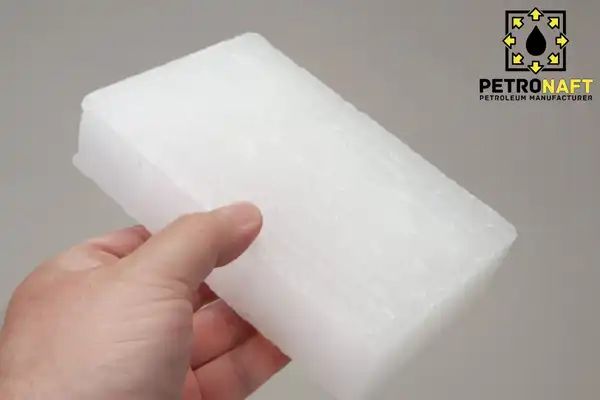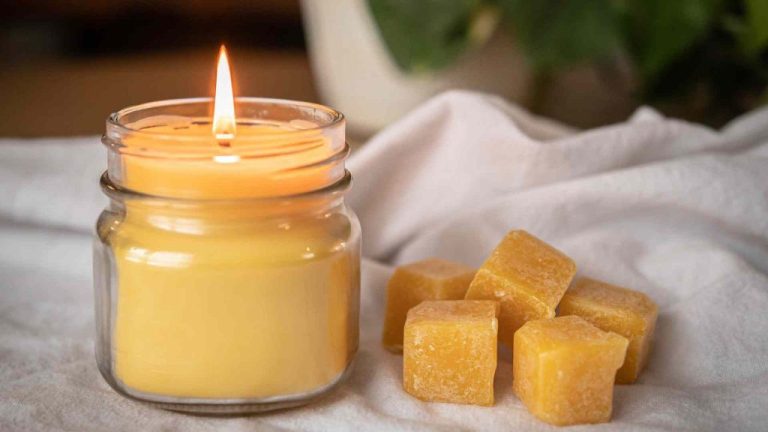Can I Melt A Candle In The Microwave?
Melting candles in a microwave may seem harmless at first glance, but looks can be deceiving. In 2015, a viral video showed a burning candle erupting into a fireball inside a microwave in mere seconds. The dangers of this experiment stunned viewers, sparking debates about the wisdom of heating candles in microwave ovens. While the spectacle draws curiosity, the risks outweigh any benefits. This article delves into the science behind microwaving candles and explains why you should never try it yourself.
Safety Concerns
Microwaving candles poses some risks that you should be aware of before attempting it. The primary safety concerns are:
- Risk of fire – Microwaving wax can easily lead to overheating and potentially catch fire, especially if left unattended. The wax may ignite if it gets too hot. According to experts, candles should never be microwaved more than 30 seconds at a time to avoid potential fires (https://mnkbusiness.com/can-you-put-a-candle-in-the-microwave/).
- Superheating water – Water and wax don’t mix well. If there is any water content in the wax, it can become superheated in the microwave and explosively boil over when disturbed. Always make sure wax is completely dry before microwaving (https://yourcrafts.co.uk/blogs/candle-soap-making-blog/melting-candle-wax-in-the-microwave).
- Metal fragments – Some candle wicks contain small metal wire fragments that help keep the wick upright. These metal pieces can spark, ignite, or cause arcing when microwaved. Make sure candles don’t have any metal in them before microwaving (https://www.quora.com/Can-you-microwave-a-candle-to-melt-the-wax).
Be very careful about potential safety hazards if you try microwaving candles. Monitor the process closely and stop immediately if you see signs of overheating. Consider safer melting alternatives whenever possible.
Factors That Affect Flammability
The type of wax used in a candle can significantly impact its flammability and safety when microwaved. Paraffin wax, a byproduct of petroleum refining, is commonly used in mass-produced candles. It has a low melting point and is highly flammable, making paraffin candles particularly dangerous to microwave (Source). Beeswax and soy wax have higher melting points and are less volatile, reducing the fire risk slightly.

Candle additives like scents and dyes can also increase flammability. These additional chemicals lower the autoignition temperature of the wax, making it easier to catch fire in the microwave’s high heat (Source). Fragrance oils are especially problematic.
The wick material also matters. Cotton wicks are preferred over synthetic alternatives, which can create larger flames and get hotter. The wick size should match the candle diameter to prevent overheating.
Finally, metal or flammable containers are not recommended. Glass and ceramic containers are better choices as they can withstand the heat of microwaving without contributing additional fuel to a fire (Source).
Recommended Practices
When melting candles in the microwave, it is important to follow some basic safety precautions. According to experts at Supplies for Candles, the key is to “Use a microwave safe jug or bowl.” Glass and ceramic containers work well, as they can withstand heat without leaching chemicals. Avoid plastic containers which may melt or release toxic fumes when heated. Your Crafts suggests to “Watch the wax carefully” while melting. Microwaves heat unevenly, so stirring periodically helps avoid hot spots. Suffolk Candles advises “Stopping early“, before all wax is fully melted. The remaining heat will continue melting the last bits. Finally, let the wax “cool and solidify” before handling to prevent burns.
Suggested Alternatives
There are safer methods for melting candle wax that don’t risk overheating the wax or causing damage to your microwave. Popular alternatives include:
Double Boiler
A double boiler utilizes indirect heat to gently melt wax. Fill a saucepan with a couple inches of water and place a heat-safe bowl on top, making sure the bottom of the bowl isn’t touching the water. Put wax in the bowl, then heat the water to a simmer. Stir regularly until the wax fully melts. This is one of the most common ways to safely melt wax without risk of overheating (Source).
Hot Water Bath
Similar to a double boiler, you can create a hot water bath by placing a glass or metal container of wax inside a pot of simmering water. The indirect heat will melt the wax gently. Make sure the container isn’t fully submerged and stir periodically (Source).
Electric Wax Warmer
Wax warmers or melters allow you to melt wax safely using a low wattage heating element. Simply plug it in, add wax, and set the temperature. The wax will melt evenly without overheating. This is an affordable option if you’ll be melting wax regularly (Source).
Low Temperature Oven
Preheat your oven to the lowest possible temperature, usually around 170°F. Put the wax in a glass, metal, or silicone container and place in the oven. Monitor closely and stir periodically until melted. This works well for large batches of wax (Source).
Microwave Settings
When melting candles in the microwave, it’s important to use low to medium power in short bursts to avoid overheating the wax. According to How to Melt Candle Wax | Step by Step Guide, you should microwave the wax for 1 minute at a time at 50% power, monitoring the temperature and stirring frequently. The microwave tends to heat wax unevenly, so stirring helps distribute the heat and prevent hot spots that could ignite. Your Crafts recommends melting wax for 30 seconds at a time at a low to medium power level, stirring after each interval.
In general, melting wax in short bursts allows you to gradually raise the temperature without overshooting and avoids a rapid boil that can cause splattering or be a fire hazard. Frequently removing the wax and stirring helps gauge the melting progress and even out the temperature. Low to medium power with short heating times and frequent stirring is the safest approach for melting wax in the microwave.
Materials to Avoid
Certain materials are not safe to microwave when melting candles, as they can easily overheat, ignite, or explode [1]. The two main items to avoid are:
Metal Tins
Candles in metal tins or containers should never go in the microwave, as the metal can spark, arc, or melt [2]. Metal reflects microwave radiation extremely well, resulting in dangerous overheating. Only use microwave-safe materials.
Highly Flammable Waxes
Waxes like paraffin are highly flammable and can easily ignite when microwaved. Beeswax, soy wax, and other natural waxes melt at lower temperatures and are safer options. Avoid waxes with flashpoints under 400°F.
Common Mistakes
Melting candles in the microwave comes with some common pitfalls. Being aware of these mistakes can help ensure the process goes smoothly and safely.
One of the biggest risks is leaving a candle unattended while melting it in the microwave. Candles contain flammable wax and wicks that can easily overheat, ignite, or explode if left alone. Stay nearby the microwave and check the candle frequently.
It’s also easy to accidentally use too high of a power setting when microwaving candles. Full power is rarely needed and can make the wax dangerously hot. Opt for 50% power or lower to gently melt the candle.
Overheating is another common error. Melting too long or stopping the microwave prematurely can lead to excess heat buildup. Follow recommended melting times and allow the candle to rest before handling.
With vigilance and care, these common mistakes can be avoided. Take your time, use moderate power, watch the melting process, and let the candle fully cool before removing it from the microwave.
Troubleshooting
If smoke occurs while melting a candle in the microwave, immediately stop the microwave. Carefully remove the candle and wax from the microwave, making sure not to burn yourself. Allow everything to fully cool before attempting to clean the microwave. Superheated wax can continue generating smoke and fumes even after removing from the microwave. Opening windows, turning on vents, or carefully taking it outside can help prevent smoke buildup.
Avoid creating superheated wax when melting candles in the microwave. Heat wax at 50% power in short intervals, stirring frequently. Superheated wax can catch fire rapidly once disturbed or removed from the microwave. It can also boil explosively if adding new wax or objects to an overly hot container.
If wax spills or splatters in the microwave, wait for it to completely cool. Then remove any solid wax chunks and clean the microwave interior with mild, non-abrasive soap and water. Avoid hard scrubbing, metal tools, or abrasive cleaners, as these can damage the microwave surface. A spray-on cooking oil like Pam can help loosen wax stuck to the microwave walls. For tough wax stains, lay a towel soaked in hot water over the area to gently melt and absorb the wax.
Refer to your microwave user manual for any additional manufacturer guidance on avoiding fires, handling spills, and cleaning the interior safely after melting wax.
Conclusion
In summary, melting candles in the microwave comes with some risks and is generally not recommended. The flammable nature of wax means that overheating it can lead to fire. If you do choose to melt candles in the microwave, take extreme care – use low power, melt only small amounts at a time, and stay by the microwave the entire time to watch for problems.
For maximum safety, look into candle melter appliances or double boilers on the stove instead of the microwave. Follow all manufacturer instructions. And remember, never leave melting candles unattended – that’s when most fires occur. Take the proper precautions, and you can find a safe way to reuse old candle wax.





